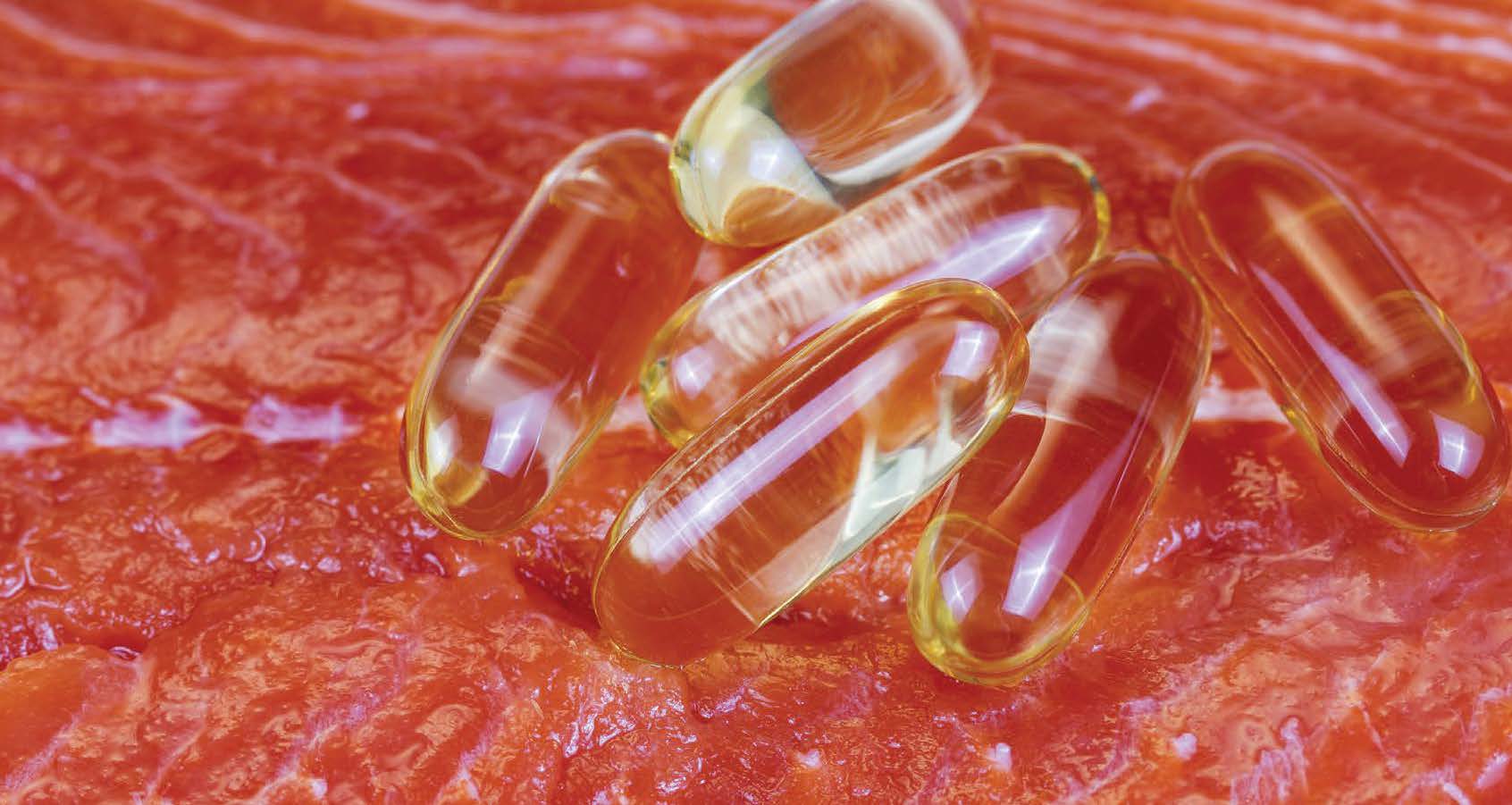Knee lubricant? Sounds fishy…
Evan Zabawski | TLT From the Editor January 2014
Promoting healthy joints naturally.

It’s not to say that all of our joint problems can be alleviated by processing various creatures from the ocean.
THE CONNECTIONS BETWEEN OUR BONES ARE CALLED JOINTS. Joints are what allow us to bend, turn, wiggle and wave. Our joints are cushioned with tissue called cartilage and synovium (or synovial membrane) and a thick, colorless lubricant called synovial fluid.
The word synovia was coined by Paracelsus, a Swiss German Renaissance physician, who founded the discipline of toxicology, named zinc and also coined the terms gas, chemistry and alcohol. Synovia may have been derived from the Greek word syn, meaning with, and
ovum, the Latin word for egg, because of synovial fluid’s likeness to albumen or egg white.
Synovial fluid is a bit like Silly Putty, with thixotropic and elastic (instantaneous dilatant) properties. Its viscosity decreases with an increase in the rate of movement, but it is pressure-resistant under sudden impact. Due to its viscoelastic properties and affinity to the cartilage surfaces, normally it cannot be squeezed out.
Synovial fluid alone is not sufficient for maintaining efficient lubrication. The resiliency and the time-dependent and stressdependent elasticity of cartilage is also a factor. With osteoarthritis, the cartilage degenerates or disappears, and the synovial fluid undergoes mechanochemical degradation and may become Newtonian, thereby losing its load-carrying capacity at all rates of movement and is able to be squeezed out. When synovial fluid is reduced, or no longer functions optimally, the friction within the joint causes inflammation in the form of sensory pain.
The cells of both the synovial membrane and fluid require first a sugar (glucose) and second, a protein (amine) for cell metabolism. As such, they are nourished with a naturally occurring chemical called glucosamine sulphate. The first published study about glucosamine was done in 1969 in Germany, but a later study in 1980 emphasized the importance of a sufficient supply for the joints. It was this later study that also noted that “NSAIDs (Non-Steroidal Anti-Inflammatory Drugs) and cortico-steroids inhibit this synthesis.” The term NSAID will be familiar to those who read the labels on drugs such as aspirin, Motrin and Advil.
A better method for improving joint lubrication is to control inflammation by using natural anti-inflammatories such as essential fatty acids (EFAs) and antioxidants such as omega-3 oils. A key omega-3 EFA called eicosapentaenoic acid (EPA), found in salmon, herring, sardine and tuna oil, inhibits a type of prostaglandin hormone. Prostaglandins cause inflammation, pain and fever as part of the healing process.
Glucosamine sulphate can also be taken as a supplement, as it stimulates the regeneration of damaged cartilage. The glucosamine is isolated chemically from chitin, which is a major component of the exoskeleton of different types of invertebrates (e.g., shellfish such as lobsters, shrimp and crabs).
It’s not to say that all of our joint problems can be alleviated by processing various creatures from the ocean. There are some preventive measures as well. Knees, hips and back joints are all weight-bearing, so keeping your weight within a healthy range will reduce the friction and wear of these joints. Aerobic exercise has been shown to reduce joint inflammation and low-impact exercises like cycling and swimming will not compound the problem.
Mobility plays a major role as well. Our bodies are designed to move and being glued to the couch or an office chair increases the risk of joint pain. Taking frequent breaks to stretch or go for a short walk greatly reduces stiffness, and correct posture also reduces joint stress. Lastly, maintain muscle strength, as muscles support joints so they don’t have to do all the work.
 Evan Zabawski, CLS, is the senior reliability specialist for Fluid Life in Edmonton, Alberta, Canada. You can reach him at evan.zabawski@fluidlife.com
Evan Zabawski, CLS, is the senior reliability specialist for Fluid Life in Edmonton, Alberta, Canada. You can reach him at evan.zabawski@fluidlife.com.